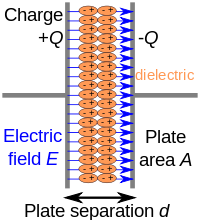
Photo from wikipedia
Fundamental aspects of undoped and dopant-assisted dielectric barrier discharge ionization (DBDI) were investigated with the aim to overcoming the suboptimal ionization efficiency of non-polar species. In the absence of dopants,… Click to show full abstract
Fundamental aspects of undoped and dopant-assisted dielectric barrier discharge ionization (DBDI) were investigated with the aim to overcoming the suboptimal ionization efficiency of non-polar species. In the absence of dopants, PAHs mostly form [M+H]+ rather than [M]+• ions. Humidity was shown to increase the relative amount of protonated PAHs, while the introduction of other dopants such as fluorobenzene and chlorobenzene, shifted the ionization towards radical cations. The source of the protons was clarified through the use of deuterated species, and confirmed both water as well as dopants as potential sources. The type of plasma gas also influenced the ionization, with the relative amount of radical cations increasing from CO2, to N2, to air. The addition of SF6 gas and the amount of low-energy (0-11 eV) electrons in the source suggests that Penning ionization leads to the high proportion of radical cations in an air plasma. Penning ionization of excess dopant to form radical dopant species, and subsequent charge exchange with the PAHs, is proposed as principal ionization mechanism for the formation of radical cationic PAHs in dopant-assisted DBDI. Moreover, benzylamine "thermometer molecules" were used to evaluate the energy involved in the ionization process, which showed that dopants can affect the internal energy (-39.4 kJ mol-1 with humidity in a nitrogen plasma, and +15.7 kJ mol-1 with fluorobenzene in an air plasma). A deeper understanding of fundamental aspects, especially of dopant-assisted ionization in a dielectric barrier discharge source, will be vital for future method optimization, particularly with regards to non-polar species that are difficult to ionize.
Journal Title: Analytical chemistry
Year Published: 2019
Link to full text (if available)
Share on Social Media: Sign Up to like & get
recommendations!